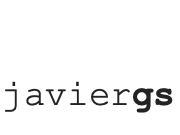I am presenting a short talk at the 42nd Conference of Research and Development by Tecnologico de Monterrey (CIDTEC) in Monterrey, Nuevo Leon, Mexico. January 2012.
Summary
The level up procedure is a method for evaluating the learning gains of educational software, and tutoring systems in particular that includes some form of embedded assessment. The instruction is arranged in levels that take only a few minutes to master, and students’ level up when the software indicates they have achieved mastery. This paper reports some methodological lessons learned from applying this procedure in studies of a tutoring system that taught high school students how to model dynamic systems. The inspiration for the proposed solution come from computer games, which often have many levels of difficulty, and players “level up” only when they have demonstrated competence in their current level. Although this design element is included for many reasons (e.g., keeping players in the optimal game play corridor), it also serves as an assessment of player competence. This procedure can be used to evaluate non-game instruction if (1) the instruction can be divided up into levels where the training inside a level is homogenous, and (2) there is some kind of assessment embedded in the instruction so that a student can level up without having to take a test. We call this the level up procedure.
Source
Conference Paper.
Proceedings of the 19th International Conference on Computers in Education.
Asia-Pacific Society for Computers in Education.
Companion
42nd Conference of Research and Development by Tecnologico de Monterrey
Reference
Vanlehn K., Burleson W., Chavez-Echeagaray M. E., Christopherson R., Gonzalez-Sanchez J., Hidalgo-Pontet Y., Muldner K., Zhang L. (2012). The Level Up Procedure: How to Measure Learning Gains without Pre- and Post-testing. Companion of the 42nd Conference of Research and Development by Tecnologico de Monterrey. Monterrey, Nuevo Leon, Mexico. January 2012. Page 233. ISBN: 978-607-501-073-1
